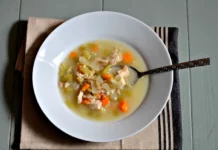 Naomi Ross
Naomi Ross
Purées are wonderful as a side dish or background accompaniment; they are a blank canvas upon which you can showcase a short rib or chicken breast.
Potatoes may be the most common ingredient because there are so many varieties, and it is the ubiquitous food when it comes to Passover. There’s no need to use the plain old white potato; vary your mash.
Try this with kohlrabi instead of celeriac for a slightly sweeter variation (the combination actually tastes like cauliflower).
What did people use before food processors? The food mill! It’s a great tool for blending foods into specific textures with precision and total control. The fine disc is perfect for completely smooth purees like baby food, and the medium disc makes perfectly textured applesauce while holding back unwanted skins.
Cook’s note: I like using a food mill for the best texture and total control; if using a food processor, pulse just until you reach the desired consistency.
Celeriac and Potato Purée | Dairy or Pareve
Serves 6-8
1 large celeriac (aka celery root), peeled and chunked
4 large or 6 small potatoes, peeled and chunked
Kosher salt to taste, plus 1 teaspoon
1-2 tablespoons butter or olive oil
Freshly ground black pepper to taste
Fresh minced herbs such as dill, parsley, etc. (optional)
Fill a large pot with salted water. Place it over medium-high heat and bring it to a rolling boil.
Add the celeriac and potatoes. Return it to a boil and simmer for about 20 to 25 minutes, or until the celeriac is tender and easily pierced with a fork.
Remove it from the heat. Set a food mill fitted with a medium blade over a large bowl.
Using a slotted spoon, remove the celeriac and potatoes (reserve some of the cooking water) and transfer it to the food mill. Rotate the food mill until all of the celeriac and potatoes are puréed; you may need to do this in batches.
Add butter or olive oil to the hot milled mixture; stir it to dissolve and blend.
(Alternatively, you can use a food processor fitted with an “S” blade. Process the celeriac and potatoes with butter or oil by pulsing until puréed.)
Add a little of the reserved cooking water to the mixture only as needed to thin the consistency if too thick.
Season to taste with plenty of salt and pepper, as well as herbs, if desired.
Roasted Garlic Variation:
For a stronger flavor, add 2 roasted garlic cloves (peels removed) to the food mill before puréeing.

Spiced French Roast With Dried Fruits | Meat
Serves 6-8
This braised meat is perfect for seder night or any special time of year. A super aromatic spice rub infuses the meat with flavor overnight, so plan to marinate it a day ahead. This recipe can be used interchangeably with brisket or top-of-the-rib. Amounts double easily for a larger cut of meat.
Cook’s note: For a thicker sauce, transfer the cooking liquid into a small saucepan and bring it to a simmer over medium heat for about 15 to 20 minutes, reducing until thickened to the desired consistency.
Make ahead: This can be made two to three days ahead of time. For the best slicing success, slice when cold; rewarm it covered in a 350-degree oven for 20 to 30 minutes.
2 teaspoons kosher salt
1 teaspoon ground coriander
¾ teaspoon ground cumin
½ teaspoon freshly ground black pepper
1 teaspoon ground cinnamon
¼ teaspoon ground nutmeg
½ teaspoon ground allspice
1 (3-pound) French roast
2-3 tablespoons canola or vegetable oil
2 medium onions, sliced (about 3 cups)
4 cloves garlic, chopped
1 cup dry kosher red wine
2 small or 1 large parsnip, peeled and cut into 1-inch pieces
2 small or 1 large carrot, peeled and cut into 1-inch pieces
½ cup whole pitted prunes
½ cup dried apricots
2 tablespoons water
1½ tablespoons honey
1 tablespoon tomato paste
chopped parsley for garnishing (optional)
Combine the salt, coriander, cumin, black pepper, cinnamon, nutmeg and allspice in a small bowl. Arrange the roast in a large roasting pan; rub the spice mixture evenly over both sides. Cover and refrigerate overnight.
Preheat your oven to 325 degrees F.
Heat 2 tablespoons of canola oil in a large skillet over high heat. Carefully place the roast in the skillet. Brown it for 1 to 2 minutes per side, turning once. Remove the roast from the pan and transfer it to a plate.
Lower the heat to medium and add another tablespoon of oil to the pan if it looks dry. Add the onions and garlic, and sauté, stirring often, about 5 to 6 minutes or until translucent.
Pour the wine into the pan and deglaze, scraping up the browned bits at the bottom of the pan. Bring it to a boil and simmer for 2 to 3 minutes.
Transfer the mixture to a roasting pan, arranging the roast on top, fat side up. Surround the roast with parsnips, carrots, prunes and apricots.
In a separate small bowl, mix the water, honey and tomato paste. Stir to blend and then pour it over the top of the roast, spreading to cover. Cover the pan tightly with foil and bake until tender, about 2½ hours (or longer for larger cuts). The meat is done when a fork pierces and releases easily. Allow the meat to rest and cool for about 30 minutes.
Transfer the roast to a cutting board or work surface. Using a sharp carving knife, thinly slice the roast against the grain on a slight diagonal.
Transfer the slices to a serving platter, and surround the meat with the roasted vegetables and fruits. Garnish with chopped parsley.
Serve the roast with pan juices.






